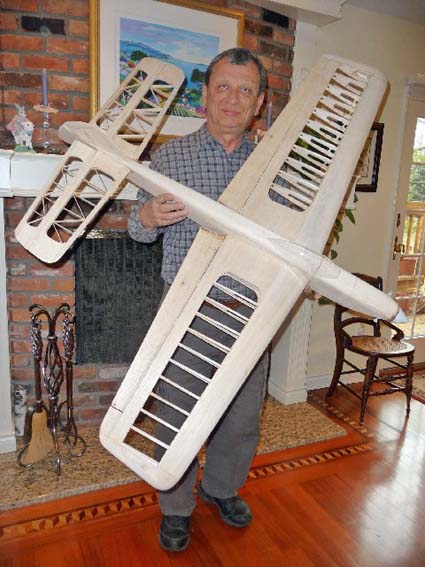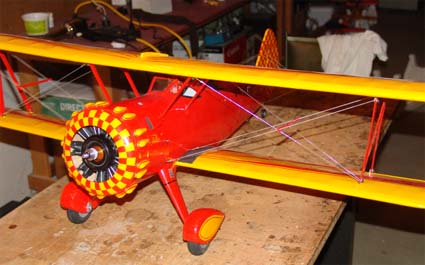 |
Flying High With Electric Power!
The Ampeer ON-LINE!
Fly the Future - Fly Electric! |
Site Table of Contents
| President: | Vice-President: | Secretary/Treasurer: |
| Ken Myers | Richard Utkan | Rick Sawicki |
| 1911 Bradshaw Ct. | 240 Cabinet | 5089 Ledgewood Ct. W. |
| Commerce Twp., MI 48390 | Milford, MI 48381 | Commerce Twp., MI 48382 |
| (248) 669-8124 | (248) 685-1705 | 248.685.7056 |
 | ||
| Board of Directors: | Board of Directors: | Ampeer Editor |
| David Stacer | Jack Lemon | Ken Myers |
| 16575 Brookland Blvd. | 8908 Sandy Ridge Dr. | 1911 Bradshaw Ct. |
| Northville, MI 48167 | White Lake, MI 48386 | Walled Lake, MI 48390 |
| 248.924.2324 | 248.698.4683 | 248.669.8124 |
| Mailed Ampeer subscriptions are no longer available | ||
| The Next Meeting:
Date: April 1 Time: 7:30 p.m. Place: Ken Myers' house (see this issue for details) | ||
|
From Ralph Cook In Northern Germany In the March issue of the Ampeer I stated, "3510 is stator diameter, the first two digits, and the length, last two digits, a non-useful number, in millimeters." Hopefully folks knew that I meant stator size, not diameter. Ralph has a different idea about the numbers. He feels that they can be useful. Here is his response that I received via email. KM Hello Ken, I have been reading your newsletter for years. I thank you for your continued effort to put electric flight on a sound mathematical basis and the many useful concepts that you have presented. But after reading the March issue, I have to take issue with a statement made in the last paragraph on page 8, "a non-useful number" - It just isn't so.
What does the Scorpion specifications say?
The outside diameter is 37.5 mm, length is 39.7 mm, weight is 129 g, and maximum continuous power is 550 W. If you look at the prop data that Scorpion provides (second web address), the picture looks a lot different. The data is color-coded. The largest prop that is in the green on a 3s LiPo is a APC 12x8 E (for me a decent size prop) at 301 W and 7000 rpm, so the predicted 315 W looks much better when looking at the prop data and not the specs. On a 4s Li-Poly (in the green) it still will turn a APC 11x5.5E at 398 W and 9775 rpm, but a more typical prop, an APC 10x5 E, uses 290 W at 10400 rpm. The results - the motor diameter is right on, motor length a little short (the bells and other infrastructure take up more room than estimated), weight right on, predicted performance (on tested props) right on.
The formulas are: Vs [ml] = pi/4000 x ds [mm] x ds [mm] x ls [mm] P [W] = 34,265 x Vs [ml] Ð 24,732 m [g] = 9,921 x Vs [ml] + 22,842 Vs = Volume of stator; ds = diameter of stator; ls = length of stator; P = power; m = weight. Inside the square brackets are the units that are being used.
Put This One On Your Event Schedule!
The Balsa Butchers will once again be hosting the "Keith Shaw Birthday Party Electric Fly-In" at their field near Coldwater, MI. The event will take place on June 5 and 6, 2010.
|
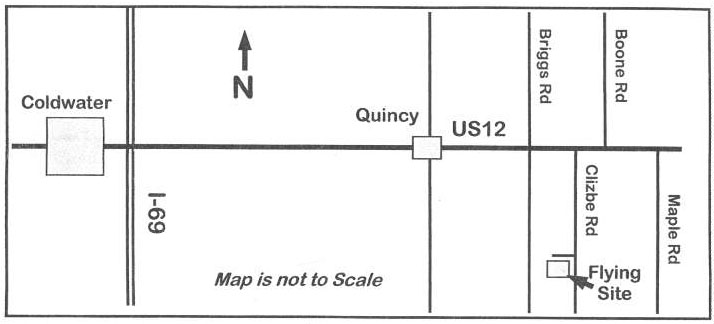
|
I love this meet. There is a lot of laid back flying with some of the Midwest's best pilots, Electric Flight Designers, Builders and Authors. I wouldn't miss it! It is a lot of fun for everyone with an interest in electric flight. KM Information Regarding the 2010 Mid-Ammerica Electric Flies The 2010 Mid-America Electric Flies (Mid-Am) will be held on July 10 & 11 at the MRCS 7 mile Rd. flying field in Salem Twp., MI. A Video Worth Watching
Hi Ken, I seldom recommend videos on the Internet. They are usually accompanied by absolutely horrible music and really aren't generally that good, but this one is worth your time! KM Hi Ken, Glad the shoulder is getting better. Haven't flown the ME-262 after the re-build and re-wiring, since heavy southern California rains have our field full of weeds, which is unfriendly to small wheels.
www.youtube.com/watch?v=9ipu9NxvKnY The March EFO Meeting The March 11 meeting was held at Ken Myers' house and was well attended with lots of projects shared. 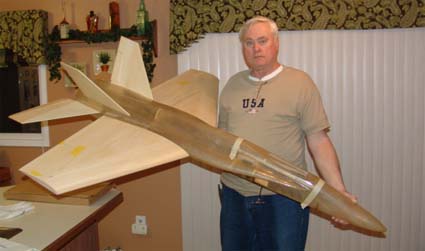 Hank Wildman showed us the F-14 that he's working on. It is an old glow pusher kit from sometime in the 80's or early 90's. Hank is converting it to EDF power and was seeking some advice on the setup of the power system. 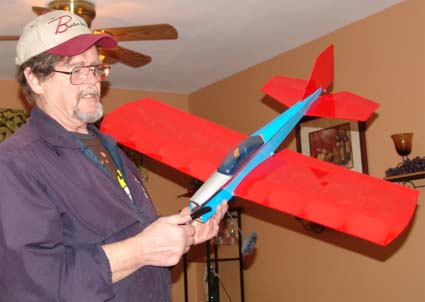 James M shared his new and latest Mountain Models Swtichback aerobatic plane. He loves the Mountain Models kits, and especially the Switchback. This is his third small one and he's got the large one as well! 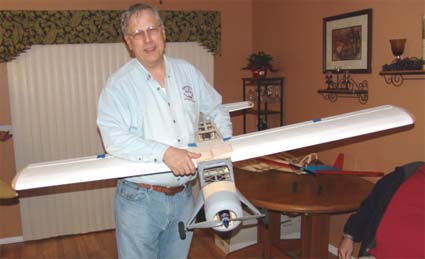 Roger Wilfong is in the process of resurrecting a basket case. It is an E-Flite Beaver that got "bonked" pretty hard at the field last year, and its owner didn't want to redo it. Roger has it stripped and most of the major repairs completed. He's now deciding on what "Beaver" cover scheme it will look best in. 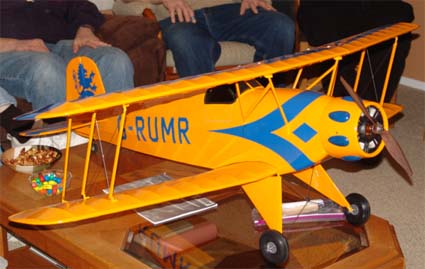 Keith Shaw brought a Buecker Jungmeister. It was originally built by Ellis Grumer, a friend of Keith's from the KRC days. That name may be familiar to some. Ellis was a longtime attendee of the KRC meet. He also designed several planes that were featured in magazines. Some of you may remember the Grandpa/Grandson biplanes that appeared in Model Aviation.
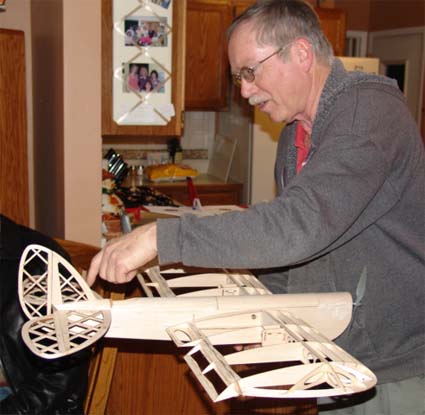 Richard Utkan showed the progress on his e'Moth. He noted that he was having a bit of a problem trying to follow the directions and the black and white photos had him scratching his head a few times. Bill Brown and Roger Wilfong, both e'Moth builders gave him a few pointers and noted some of their confusions during construction as well. It is a very nice flying plane, so the "extra" effort is worth it. 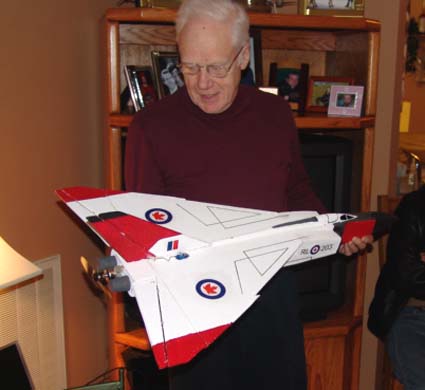 Arthur Deane gave us the lowdown on his new foam Avro CF-105 Arrow. Besides sharing the details of the model, Arthur provided us with a lot of background on this best ever Canadian fighter that was scrapped! Between Arthur and Keith we had quite a learning session about this great machine.
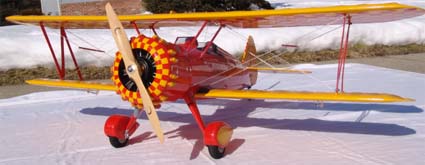 Ken Myers had a blow-by-blow Power Point presentation that he gave on his conversion of an E-Flite PT-17 into Super Stearman N56772. He showed photos of the full-scale and noted what he did to do the conversion over the last four-and-a-half months. Bill Brown brought a video to share with everyone. The video was taken at the Ultimate Soccer Arenas and showed Bill and his son, Bill Brown, Jr., flying Bill Senior's Sig 1909 Demoiselle and Sig 1910 Deperdussin. The air was clear of all other planes, except for another 1910 Deperdussin. These planes float around in beauty and grace in a great facility like this. The first few moments of the video show this very well. I think most of you might have an idea about what happened next. Yep, Junior managed to collide with Senior and two of Bill Brown, Senior's planes lay in pieces on the floor. Being the nasty type guys we are, we did have to watch it over and over and over. ;-)
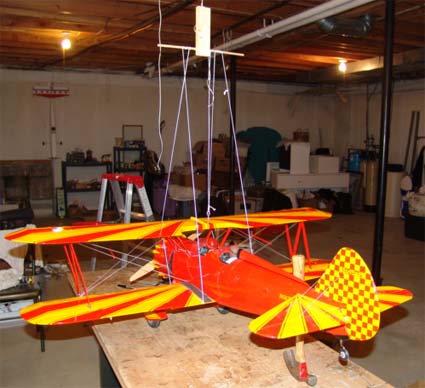 Ken then took the folks downstairs to his shop where he demonstrated balancing his new Super Stearman with a Vanessa CG rig. The night was topped off with snacks and airplane talk.
Our next meeting will be on Thursday, April 1 at 7:30 p.m. at Ken's house again. No, it's not an April Fool's joke. See ya then! A Winter's Work
I finished up a Puddlemaster, but I have no photos of it.
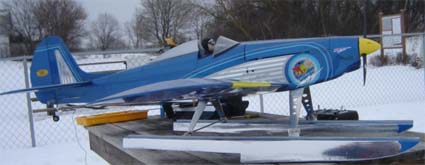 The E-Hog sits on homebuilt, balsa over foam floats. Note that the rear attachment point uses wing bolts. It is a highly modified Astro Hog with over 100 (land) flights. 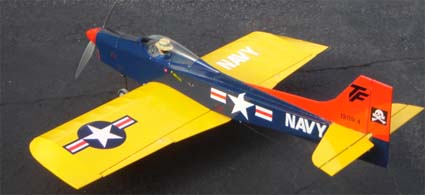 The Contender uses a Phasor 45/3, GP SS 60 esc, 4s Turnigy 2600 Li-Poly, and an APC 11x6E Prop. Its all up weight (AUW) is 4.5 lbs with about 125+ w/lb. 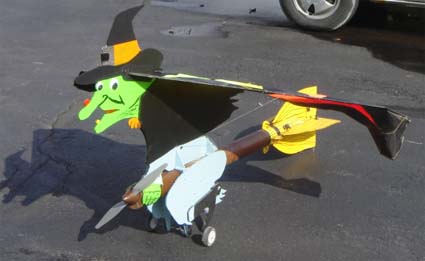 The Wilga has a 60-inch span sail of approximately 750 sq.in. She is powered by an Astro Cobalt 40w/Superbox and an APC 16x10E prop. AUW 8.5 lbs 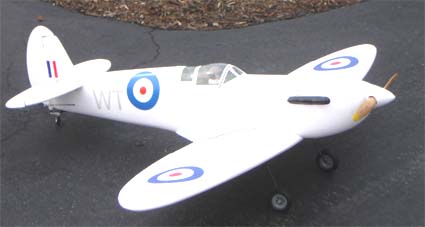 The SureFlite Spitfire came out tail heavy with a Power 25. I changed it to a Power 46 equivalent and repositioned it 1/2 inch forward. It uses a 4S Li-poly. AUW w/P25 4.25lbs.
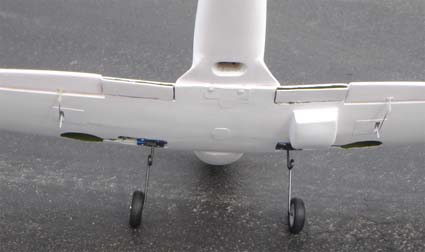 The Spitfire's modifications include adding wing fairings, retracts and split flaps. I can't have a Spit w/o wing fairings! I used pink foam to make them. Yes, the Spit is very light pink! It is a stand waaaay off sport scale early recon version. The pinkies were for dawn and dusk missions where the color was thought to blend in with the pink sky. More on Binding Spektrum Radios
Hello Ken, Last summer I had a problem with my Unionville Hobby Tiger Moth that I had converted to electric. Initially everything worked fine, but one day both aileron servos went wild. I thought they had failed, so I installed new ones, but they too gave problems. One of the club members suggested that re-binding might resolve the problem --- and it did.
Vacuum Pump For Sale
Description: Welsh 1400 B01 vacuum pump. New price $1890.00. Belt drive and I believe the motor is 1/3 HP. Very quiet running. I believe it is a vane type pump and believe has a quart of oil (maybe more) moving around inside the large cast iron pump housing. Industrial quality is evident. Sold as surplus by Iowa State University but far from worn out for purposes of vacuum bagging model aircraft parts.
Price: $80.00 delivered to Mid-Am or Coldwater meets. I would be happy to supply photos (e-mail) and discuss the set up I used with this pump for bagging wings.
Thanks,
Planes For Sale
All of the planes have motor, Li-Poly battery and ESC included. If you want the Futaba 2.4 RX left in, add $90.00. Also have many parts including cowls, and canopies, decal sets, inquire. Included with the plane will be the assembly manual. No planes are crash damaged. Maxford Ultimate Biplane.....................$150.00 Maxford GeeBee sportster....................$150.00 E Flite Hawker Sea Fury........................ $150.00 GP SE5A.............................................$100.00 * GP Combat Series F4U Corsair...............$175.00 (Jeti 15 Inrunner) *GP Combat Series F4U Corsair...............$150.00 (outrunner) * GP Combat Series Spitfire......................$150.00 * GP Combat Series P51 Mustang.............$150.00 * GP Combat Series P40 Warhawk ...........$150.00 * "belly" landers Rick Sawicki and his Electric Powered Legacy Control Line Stunt Plane
I've included some pictures of my latest electric control line project. It is a Brodak Legacy.
It is the first "modern platform" plane I have built. Prior to this one, all of my projects have been models of the "classic" and "old time era". (The era I actually flew in...competitively) In fact one past project was the "electrification" of a 45 year old stunter, the story was covered in a prior Ampeer. I found it interesting to note, how little some things have changed.
Thanks,
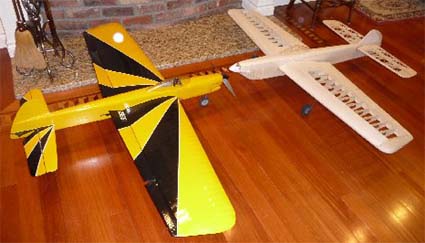 Ken's Progress on the Super Stearman
My conversion of the E-Flite PT-17 Stearman into a Super Stearman is just about complete. I have a few more things to finish up and she'll be flyable. |
To Reach Ken Myers, you can land mail to the address at the top of the page. My E-mail
address is:
KMyersEFO@mac.com
EFO WEBsite: http://homepage.mac.com/KMyersEFO/
